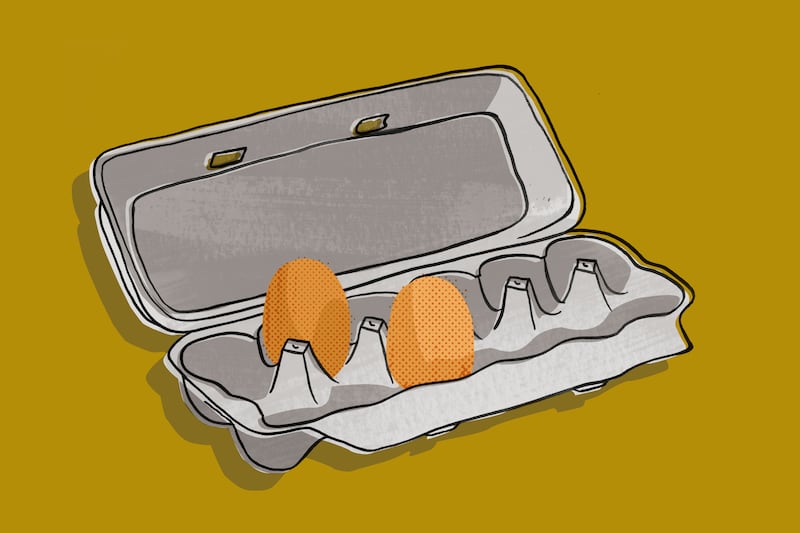The Russian government is putting money and a medal behind its efforts to bolster the country’s declining birthrate.
Russian President Vladimir Putin signed a decree this week that reinstates the “Mother Heroine” medal for women who have at least 10 children — not just birthing, but also raising them. And when the youngest child reaches a first birthday, the award comes with cash, too.
The Russian government will provide 1 million Russian rubles, the equivalent of $16,645 in U.S. dollars, CNBC reported.
The title Mother Heroine is an old one, given between 1944 and 1991 in what was then the Soviet Union. The award, a five-pointed star, holds rank similar to the bravery medal “Hero of the Russian Federation” or the Russian national service award, “Hero of Labor.”
The decree sets out some rules:
- The children must have been appropriately cared for, though details of how that’s measured aren’t laid out, the article said.
- All 10 children must still be alive, although there are exceptions for children killed in “military, official or civic service, or in a terrorist attack.”
Why a medal?
The revived award is likely a nod to a challenge facing most of the world, including the United States: stagnant or declining birthrates that could lead to a pyramid-shaped population, with a larger aged population on the bottom and a pinpoint-sized youthful generation on top.
But others note that it’s being used as a patriotic gesture, as well. The medal was first launched in the Stalin era as one aspect of broader “pronatalist” efforts at the end of World War II, Kristin Roth-Ey, an associate professor at University College London’s School of Slavonic and East European Studies, told The Washington Post.
“It was about service to the motherland,” according to Roth-Ey, who said bringing it back is “obviously a conscious echo of the Stalinist past.”
According to the article, “The revival of the motherhood medal is part of a ‘patriotic campaign’ that has been ramped up in Russia since it annexed Ukraine’s Crimea region in 2014, Roth-Ey added.”
The Moscow Times reported in late July that “Russia’s population shrank by a record average of 86,000 people a month between January and May,” citing statistics from the agency Rosstat. Despite the effects of migration, the number of deaths and births yielded a decline of 355,000 people during the first five months of 2022.
The problem with too few births
Declining fertility itself, though, is also an issue.
Flip that aforementioned pyramid over and a smaller generation of young people could be required to support the large older population’s safety net needs, struggle to fill the jobs required to keep an economy going and more.
A near-global drop in births fuels grave concerns about the economic well-being of countries and their future growth potential.
As the Deseret News reported recently, the U.S. birthrate keeps plumbing a new bottom level. It’s well below the replacement rate of an average of 2.1 births per woman of childbearing age, at around 1.6 children each.
That trend has been going on for a number of years. What’s more new is that 1 in 4 childless adults say they don’t want to have kids, according to a report by the Institute for Family Studies.
The article noted that “three factors that typically influence having children — demographics, economics and policy changes — simply don’t account for what’s happening to the U.S. birthrate, according to an opinion piece by Melissa Kearney, Phillip B. Levine and Luke Pardue published recently by MarketWatch that was based on their study in the Journal of Economic Perspectives. They said the pattern of fewer births during lean times and more births when recovery occurs is no longer holding up.”
The drop in births has been constant since the Great Recession and didn’t rebound, reflecting “lower childbearing rates across successive cohorts,” according to Kearney, Levine and Pardue.
Whatever the reason, economists, demographers, politicians and others believe there’s cause for concern, as the Deseret News reported last year.
Demographer Lyman Stone, a scholar with the American Enterprise Institute and the Institution for Family Studies, said women are not having the number of children they say they’d like to have — what the article called a “kind of human tragedy that could also lead to people being lonelier and maybe poorer as they grow old.”
Stone and Pamela S. Perlich, director of demographic research for the Kem C. Gardner Policy Institute at the University of Utah, have noted risks posed by falling fertility across various domains: less robust economic growth, fewer entrepreneurs, less wealth accumulation, less innovation, challenges for the stock market and the housing market, and more.
Countries, including Russia and the United States, are trying to find the best response to change the demographic trajectory, with some effort put into letting couples know they can afford to have children.
“Really, it comes down to support for young families and restructuring the institutions of work and home life in a way that younger people will feel economically secure in having more kids,” Perlich told the Deseret News.
A medal might bolster family-size courage, too — as Russia seems poised to find out.


